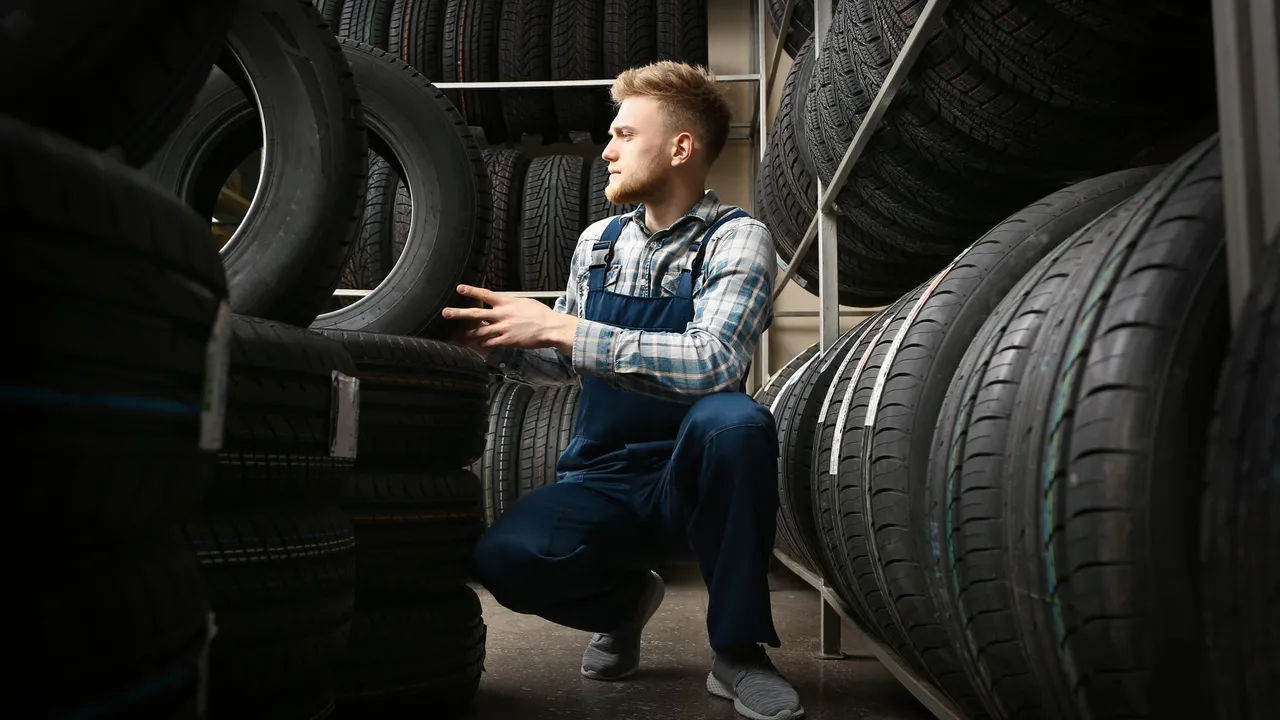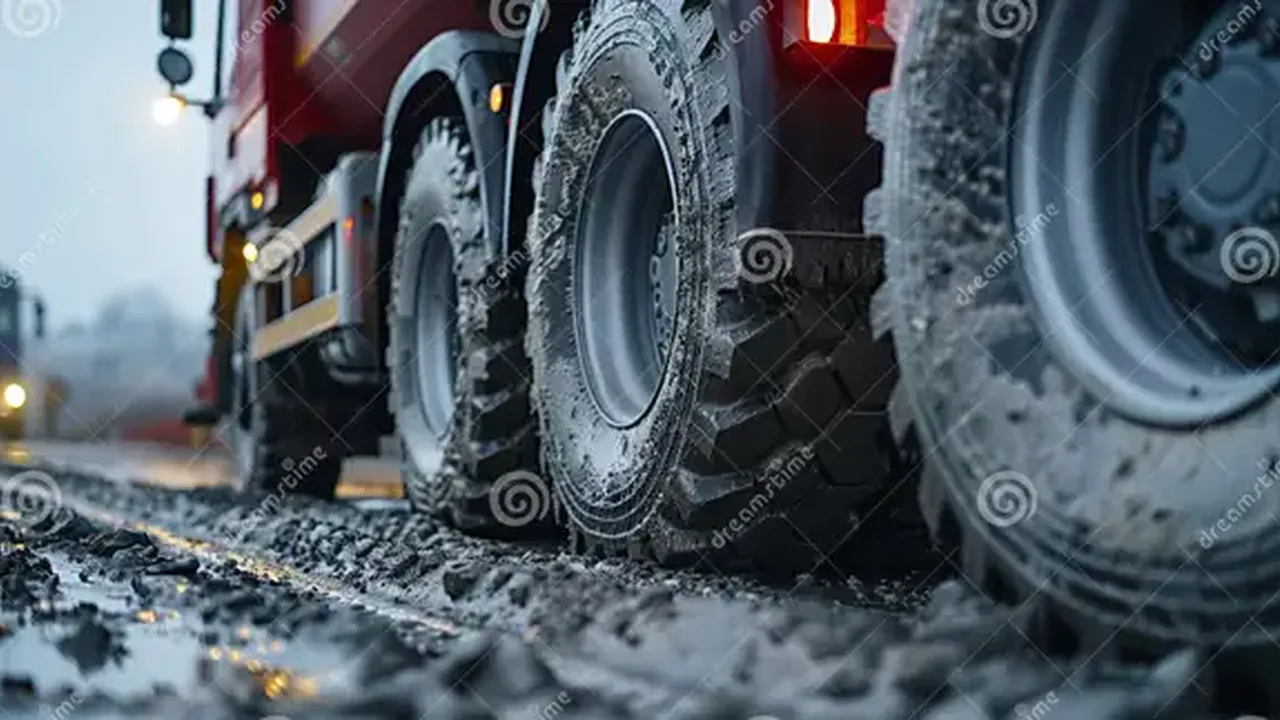How to Choose the Right Tires for Your Car: Performance and Safety

Understanding Tire Basics for Optimal Car Performance and Safety
So, you need new tires, huh? It's not as simple as just grabbing the cheapest set you can find. Your tires are the only thing connecting your car to the road, so they play a HUGE role in how your car performs, how safe you are, and even how much gas you burn. Let's break down some tire basics to get you started on the right track.
Decoding Tire Size and Specifications for Your Vehicle
That weird code on the sidewall of your tire? That's your tire size. It looks something like "P205/55R16 91V." Here's what it means:
- P: This indicates the type of tire. "P" stands for passenger tire. If it starts with "LT," it's a light truck tire.
- 205: This is the tire width in millimeters.
- 55: This is the aspect ratio, the height of the sidewall as a percentage of the width. In this case, it's 55% of 205mm.
- R: This means it's a radial tire (pretty much all tires are radial these days).
- 16: This is the wheel diameter in inches.
- 91: This is the load index, indicating how much weight the tire can carry. You'll need to look up this number on a load index chart.
- V: This is the speed rating, indicating the maximum speed the tire is designed to handle. Again, you'll need to look up this on a speed rating chart.
It's CRUCIAL to use the correct tire size recommended for your vehicle. You can find this information in your owner's manual, on a sticker inside your driver's side doorjamb, or online. Using the wrong size can mess with your speedometer, handling, and even your car's safety systems.
Tire Tread Patterns and Their Impact on Performance
The tread pattern isn't just for looks! It's designed to channel water and snow away from the tire, providing grip. Different tread patterns are better suited for different conditions:
- Symmetric: The same pattern on both sides of the tire. Good all-around performance, quiet ride, and can be rotated in any direction. Great for everyday driving.
- Asymmetric: Different patterns on the inside and outside of the tire. The outside is designed for dry grip, and the inside for wet grip. Generally offer better performance than symmetric tires.
- Directional: Designed to rotate in one direction only. Excellent for wet and snowy conditions, as they quickly evacuate water. You'll see an arrow on the sidewall indicating the direction of rotation.
Understanding Tire Wear and Maintaining Optimal Tread Depth
Keep an eye on your tire tread! Worn tires are dangerous, especially in wet conditions. Most tires have tread wear indicators (TWI) – small bars of rubber that appear across the tread when it's worn down to 2/32 of an inch. When you see those, it's time for new tires. A simple test is the penny test: insert a penny upside down into the tread groove. If you can see all of Lincoln's head, your tires are worn and need replacing.
Choosing Tires Based on Driving Conditions and Car Type for Enhanced Safety
Okay, so you know the basics. Now let's get into choosing the right tires for *your* specific needs.
All-Season Tires: Versatility for Everyday Driving Scenarios
All-season tires are the jack-of-all-trades. They're designed to provide decent performance in a variety of conditions – dry, wet, and light snow. They're a good choice for most drivers who live in areas with moderate climates.
Recommendation: The Michelin CrossClimate2. These are a bit pricier, usually around $150-$300 per tire depending on size, but they offer outstanding grip in all conditions, including snow. They also have a long tread life and a comfortable ride. Great for daily commutes and occasional road trips. Another solid choice is the Continental TrueContact Tour, offering a good balance of performance, comfort, and price (usually $120-$250). These are known for their low rolling resistance, which can improve fuel economy.
Scenario: Daily commute to work, occasional weekend trips, mild winters. You want a tire that's safe and reliable in a variety of conditions without breaking the bank.
Summer Tires: Maximizing Performance in Warm Weather for Sports Cars
Summer tires are all about performance in warm, dry, and wet conditions. They have a sticky rubber compound and a tread pattern designed to maximize grip. They're not suitable for cold weather or snow.
Recommendation: The Michelin Pilot Sport 4S. These are top-of-the-line summer tires, offering incredible grip, precise handling, and excellent feedback. Expect to pay around $200-$400 per tire. These are perfect for sports cars and performance sedans where handling is paramount. An alternative for a bit less money is the Bridgestone Potenza RE-71RS, known for its exceptional grip in dry conditions, making it a favorite for autocross and track days. Expect to pay around $180-$350 per tire.
Scenario: You own a sports car and want to maximize its handling capabilities. You live in an area with warm summers and rarely drive in cold weather.
Winter Tires: Ensuring Safety in Snow and Ice Conditions
Winter tires (also called snow tires) are designed for optimal performance in cold weather, snow, and ice. They have a special rubber compound that stays pliable in cold temperatures and a tread pattern with lots of sipes (small slits) to provide grip on slippery surfaces.
Recommendation: The Bridgestone Blizzak WS90. These are consistently ranked as one of the best winter tires on the market. They offer excellent grip on snow and ice, and they're relatively quiet on dry pavement. Expect to pay around $130-$280 per tire. If you need something that can handle even deeper snow and ice, consider the Michelin X-Ice Snow. These are known for their long-lasting performance and excellent braking on icy surfaces. They usually cost around $150-$320 per tire.
Scenario: You live in an area with harsh winters and frequent snowfall. You prioritize safety above all else and are willing to switch to winter tires for the cold months.
Truck and SUV Tires: Durability and Load Capacity Considerations
Truck and SUV tires need to be more durable and have a higher load capacity than passenger car tires. They're often designed for off-road use as well.
Recommendation: The Michelin Defender LTX M/S. These are a great all-around choice for trucks and SUVs. They offer a comfortable ride, long tread life, and good performance in a variety of conditions. Expect to pay around $180-$350 per tire. If you're planning on doing some serious off-roading, consider the BFGoodrich All-Terrain T/A KO2. These are incredibly durable and provide excellent traction in mud, sand, and rocks. They're a bit noisier on the road, but they're worth it for the off-road performance. Expect to pay around $200-$400 per tire.
Scenario: You own a truck or SUV and need tires that can handle heavy loads, occasional off-road use, and everyday driving.
Understanding Tire Pressure Monitoring Systems (TPMS) for Enhanced Safety
Most modern cars have a Tire Pressure Monitoring System (TPMS). This system alerts you when your tire pressure is too low. Maintaining proper tire pressure is crucial for safety, fuel economy, and tire life.
The Importance of Maintaining Proper Tire Pressure for Fuel Efficiency
Underinflated tires increase rolling resistance, which means your engine has to work harder to move the car. This can significantly reduce your fuel economy. Check your tire pressure regularly (at least once a month) and inflate your tires to the recommended pressure, which you can find on the sticker inside your driver's side doorjamb or in your owner's manual.
How TPMS Works and What to Do When the Light Comes On
TPMS uses sensors in your wheels to monitor tire pressure. If the pressure drops below a certain level, the TPMS light will illuminate on your dashboard. When this happens, check your tire pressure immediately and inflate the tires to the correct pressure. If the light stays on after you've inflated the tires, there may be a problem with the TPMS system itself, and you should have it checked by a mechanic.
Tire Rotation and Balancing for Extended Tire Life
Regular tire rotation and balancing can significantly extend the life of your tires.
Benefits of Regular Tire Rotation and Recommended Rotation Patterns
Tire rotation involves moving your tires to different positions on the car to even out wear. Different rotation patterns are recommended for different types of vehicles and tires. Your owner's manual will specify the recommended rotation pattern for your car. Generally, front tires wear out faster than rear tires, especially on front-wheel-drive vehicles. Rotating your tires helps to distribute the wear more evenly, extending their lifespan.
Understanding Tire Balancing and Its Impact on Ride Comfort
Tire balancing ensures that the weight of the tire and wheel assembly is evenly distributed. When a tire is out of balance, it can cause vibrations, especially at higher speeds. Having your tires balanced regularly will improve ride comfort and prevent uneven tire wear.
Where to Buy Tires: Online Retailers vs Local Tire Shops
You have a few options when it comes to buying new tires.
Pros and Cons of Purchasing Tires Online
Pros: Often lower prices, wider selection, convenient shopping from home.
Cons: You have to arrange for installation, you can't physically inspect the tires before buying, returns can be a hassle.
Benefits of Supporting Local Tire Shops and Expert Installation Services
Pros: Expert advice, professional installation, convenient warranty service, supporting your local community.
Cons: Often higher prices than online retailers, may have a smaller selection.
Ultimately, the best place to buy tires depends on your individual needs and priorities. If you're looking for the lowest price and don't mind arranging for installation yourself, online retailers can be a good option. If you value expert advice and professional installation, a local tire shop is the way to go.
DIY Tire Maintenance Tips for the Average Car Owner
You don't need to be a mechanic to take care of your tires. Here are a few simple things you can do to keep them in good condition.
Checking Tire Pressure with a Gauge: A Step-by-Step Guide
1. Buy a good quality tire pressure gauge. They're cheap and easy to use.
2. Remove the valve cap from your tire.
3. Press the gauge firmly onto the valve stem.
4. Read the pressure on the gauge.
5. Compare the reading to the recommended pressure on the sticker inside your driver's side doorjamb or in your owner's manual.
6. Add or release air as needed.
7. Replace the valve cap.
Inspecting Tires for Damage and Irregular Wear Patterns
Regularly inspect your tires for cuts, bulges, and other damage. Also, look for irregular wear patterns, such as excessive wear on the edges or in the center of the tire. Irregular wear can indicate a problem with your car's alignment or suspension.
:max_bytes(150000):strip_icc()/277019-baked-pork-chops-with-cream-of-mushroom-soup-DDMFS-beauty-4x3-BG-7505-5762b731cf30447d9cbbbbbf387beafa.jpg)






